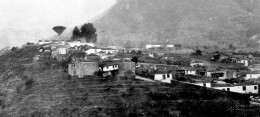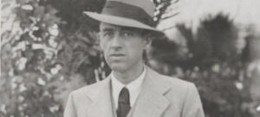José Antonio Viera y Clavijo (born in Los Realejos, 1731 – died in Las Palmas de Gran Canaria, 1813) is, without a doubt, the epitome of Enlightenment in the Canary Islands and an essential reference, given his great contribution to the general dissemination of knowledge in the islands.
He was born on December 28th, 1731, in Realejo de Arriba. His father, Gabriel del Álamo Viera, descended from Portuguese settlers who had arrived in Tenerife in the first half of the 16th century, whereas his mother, Antonia María Clavijo Álvarez, was related to both the Clavijo and the Perdomo families from Lanzarote. According to his birth certificate, he was baptised in his parents’ house, where he was born. This fact suggests that there were problems during delivery. Indeed, his biographers agree that he was a weak and sickly person.
A few months later, his family moved to Puerto de la Cruz, where he spent most of his childhood. He took his ecclesiastical studies at the Dominican Monastery in La Orotava. At the age of 18, he received the minor orders and three years later he was appointed choir chaplain at the Nuestra Señora de la Peña de Francia Church, in Puerto de la Cruz. Between sermons, he would read everything that fell in his hands.
From an early stage, Viera developed an intense intellectual activity: he mastered classical languages, translated French literature, wrote articles, essays, novels, poems, etc. Moreover, he was witty, spoke very well and was able to explain any matter in a clear and enjoyable way. Such qualities allowed him to fully participate in the well-known Nava gathering, which took place on a regular basis at the residence of the Marquis of Nava y Grimón, located in La Laguna. Many educated people from Tenerife would gather there and talk about and discuss different matters.
By 1770, Viera y Clavijo had finished writing the first volume and started writing the second one of his most prominent work: the General History of the Canary Islands.
Before turning 40, he received a tempting offer from the Marquis of Santa Cruz de Mudela to take care of his son’s education, the Marquis of Viso. This job enabled him to travel together with the marquises around the main European cities, like Paris, Vienna, Rome, Naples, Venice, Amsterdam, etc., and to know about the most modern ideas of the time first-hand.
Travelling was a very important experience for Viera y Clavijo, especially his stay in Paris, where he met the likes of Voltaire, D’Alembert, Condorcet and Franklin. He established close relationships with leading naturalists of the time was present at Parisian cabinets, where he studied and took training courses.
On July 25th, 1782, he was appointed archdeacon of Fuerteventura by the King, a position which he gladly accepted and which allowed him to come back to the Canary Islands and to his family, as his brother Nicolás, who took care of his sister María Joaquina, had been living in Vegueta (Las Palmas de Gran Canaria) since 1773.
One of the great challenges Viera wanted to rise to was the ascent of a hot air balloon. In Paris he had learnt about the virtues of aeronautics and on December 15th, 1783, his studies on gases allowed him to fly a hot air balloon in the gardens of the Marquis of Santa Cruz.
Viera competed with another distinguished islander from Puerto de la Cruz, Agustín de Bethencourt, for being the first Spaniard ever to rise one of these machines.
Throughout his last 30 years of life he devoted himself to translation. In fact, he could speak and write in different languages.
In those years, he was also dedicated to the development of the Dictionary of Natural History of the Canary Islands, which describes specimens, whether endemic or not, of the three realms of nature in the Canary Islands: the animal, vegetable and mineral kingdoms. In this work, he included ordinary cultivation and mentions the use of plants, therefore this dictionary is also a medicinal, traditional and industrial vade mecum.
Viera passed away serenely and empty-handed on the morning of February 21st, 1813, in the presence of his sister, María Joaquina. He was 82. He died peacefully, with the sole intention that his relatives fulfilled his last will: being buried in the Chapel of Saint Joseph at Saint Ann’s Cathedral in Las Palmas de Gran Canaria with the following epitaph on his gravestone “Ecce nunc in pulvere dormian” (Now I’m going to sleep in the dust).
The “Día de las Letras” (the Day of the Canarian Writers) has been celebrated since 2006 to commemorate the date of his death.





